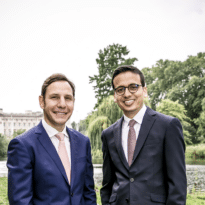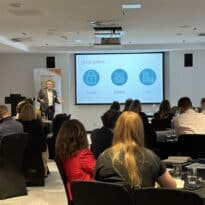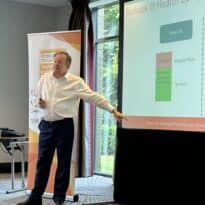Why you should listen to the interview: If you want to understand high yield bonds beyond the ‘junk’ label, this episode is for you. Manager Jack Holmes explains strategic positioning for risk-adjusted returns, and offers unique insights into inefficiencies that active managers can leverage.
This interview was recorded on 12 November 2024. Please note, answers are edited and condensed for clarity. To gain a fuller understanding and clearer context, please listen to the full interview.
Interview highlights:
High yield today isn’t the ‘junk bonds’ of yesterday
“Now it is a market which has historically had a varied reputation. A lot of people kind of consider them junk bonds and worry about defaults and excesses within the market. I think that’s somewhat overplayed. If we look at the market today, it’s a very different market to the market it was in the 1990s or 2000s.
“For instance, more than half of the market today is BB rated, which is the highest quality part of the high yield market just below investment grade. And if we look at that through time over the last 50 years, the average default rate on that part of the market has actually been 0.6%, so a very low default rate. So whenever I look at the market today, more than 50% BB, less than 10% CCC, the riskiest part of the market, which is actually where we see the vast bulk of defaults occurring through history. It actually looks very attractive. For a sterling investor in our fund a yield of almost 7.5%, that looks like an attractive place to be relative to low default risk going forward.”
Staying away from the risker part of the market
“We’re focusing very much on the BB and B part of the market, the higher quality parts of the high yield market, and avoiding CCCs at the moment. To put some context on those different risks between those two areas, over the last 50 years, if we look at those default numbers, I mentioned the 0.6% annual default chance in BBs, that figure is 26% in CCC. So you’re taking 50 times more risk within the CCC part of the market than you are within the BB market. And frankly we don’t see that reflected in pricing today. So we’re focusing on higher quality, high yield, lower chance of default.”
Adding value through currency
“Now there are other global strategies in the high yield market, but I think we are reasonably unique in actually looking at things from what we would consider a kind of truly global perspective. So, US dollar bonds, European bonds, sterling bonds, we look at across the whole gamut of currencies, the majority of high yield investors will focus on a single currency, and that can create some very big pricing discrepancies between even bonds of exactly the same company with exactly the same fundamental risk. You can actually create a lot of value by just looking between those different currencies and picking the most attractive opportunity within that.”
Why active is so important
“I think it is important though to really emphasise the difference between a passive and an active approach, though. If I look at the market today, it’s a market which has some unusual characteristics to it. So normally if I was worried about the market or I was trying to position conservatively within the market, I would sell cyclical companies and I would buy non-cyclical companies. So I’d sell, you know, construction firms, I’d sell industrial production companies and I’d buy maybe telecommunications or healthcare bonds instead. I think this is actually a very, very different environment because I think the risks actually within high yield are more focused on the non-cyclical part of the market because we have to remember, there’s two parts of the equation. There’s the volatility of the underlying business, but then there’s also the capital structure that’s being applied to it.
“I think we’re in a very interesting dynamic today where actually those non-cyclical actually look like the most risky part of the market. On the other side, I would argue for a cyclical business, you’ve had basically all the stresses you could have put upon you over the last few years. And that to me makes me quite bullish because a lot of people are still regarding those businesses as very, very risky businesses. And therefore they’re expecting very high yields to lend to them. I think that looks like a much more attractive place to earn your yield in high yield rather than frankly lending to a non-cyclical business that while on paper it may look like a good risk reward is actually carrying a lot more structural problems with it than perhaps investors are appreciating.”
Conclusion: This episode provides in-depth insights into why this segment of the bond market can offer attractive opportunities to investors when approached with a strategic, risk-conscious mindset. Listeners will also have a better understanding of what active management can offer in this inefficient market, such as utilising currency in a portfolio.






























